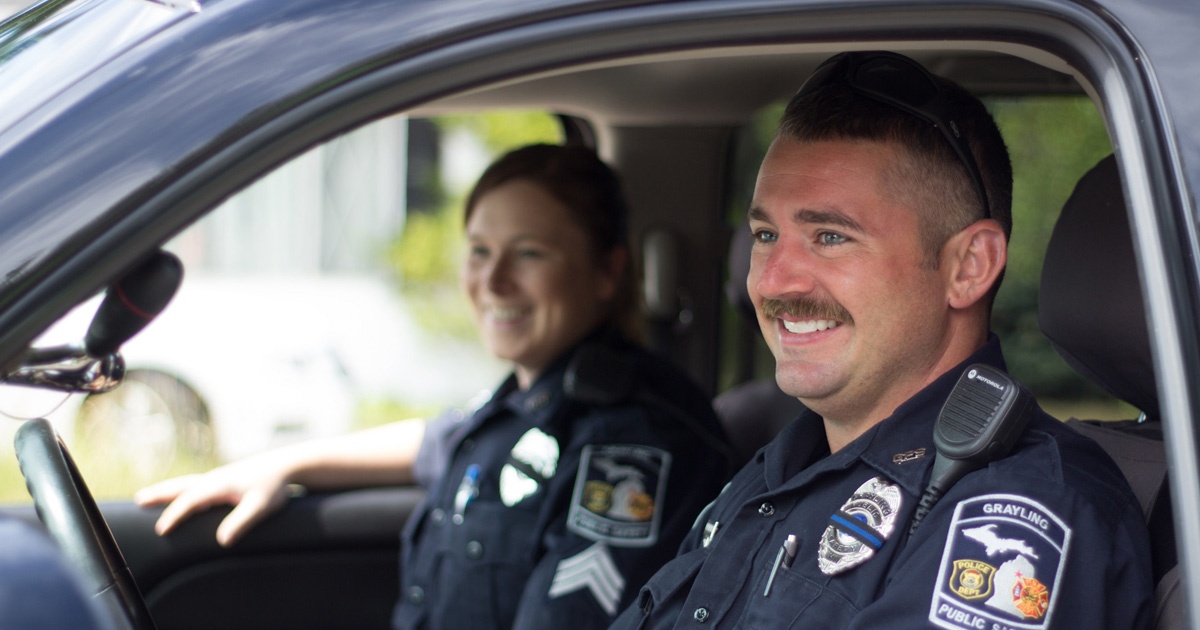Raising children with autism can be a difficult challenge to navigate. On top of all the considerations at home, parents and caregivers of individuals on the spectrum must also deal with the perceptions and interventions of others. One of the most discussed and important relationships to consider is between law enforcement and people with autism.
Many police officers are now taking specialized training courses that teach them how best to communicate with people on the autism spectrum. On the flip side, parents can also prepare their children to be in situations where they may need to communicate with authorities. In this post, we’ll discuss the relationship between autism and law enforcement and why it’s so important.
Wandering
One of the unfortunately common instances for children on the spectrum to interact with the police is if they experience wandering. Wandering usually tends to be a side effect of autism’s symptoms where the individual may stray from what they were doing or leave their home or place of safety without necessarily realizing it. It is a huge safety concern for many parents and even if measures are taken to prevent it, instances of wandering and a child or adult going missing can still occur.
Once the person is reported missing it’s up to the police to find them and interact with them, and this is a crucial interaction in maintaining safety. The best thing a parent or caregiver can do when communicating with law enforcement about the person is let them know how they experience autism and what some of their common behavioral tendencies are. Since many symptoms may not be apparent to the untrained eye, describing the unseen can be a big help.
Unseen Symptoms
In a short interaction with a stranger, an individual’s known symptoms and behaviors may go unnoticed. This doesn’t make them any less important for law enforcement to understand, as they may present barriers for effective communication. For example, many people on the spectrum experience challenges with communication both verbal and nonverbal.
They may also have anxiety related to separation or social situations that heighten their inability to manage their own symptoms. This can make it especially difficult to communicate with a police officer in a stressful situation. Between the stress of being in a potentially dangerous or stressful situation with a stranger and autism’s unseen symptoms, there’s a lot that can make these interactions ineffective or unsuccessful, which makes specialized training all the more necessary.
Specialized Training and Communication
If a police officer and an individual on the autism spectrum can’t communicate effectively it can lead to bodily harm or mental trauma that could have otherwise been avoided. While parents can certainly do their best to prepare their child for these interactions, it is law enforcement officer’s responsibility to serve and protect all members of their communities. Unfortunately, American citizens with a disability are currently more likely to be arrested than their neurotypical counterparts. So, what can be done?
As education on autism spreads and information becomes more readily available, many officers are being trained on how to properly communicate with people on the autism spectrum and other disabilities. For example, the New York City police department receives yearly training on the signs of autism that teaches them to be patient, speak calmly, and don’t touch the person or stop their repetitive motions unless it’s necessary for safety reasons. This can make a world of difference in preparing police officers for safer and more effective communication with people on the autism spectrum. Unfortunately, there are still many states and jurisdictions where these types of trainings are not mandatory or simply unavailable.
As a matter of public safety, don’t be afraid to check in with your local law enforcement office or elected official to ensure there is programming or training in place. One can hope they’ll never be in a situation to use it, but if they are it can mean a much more positive outcome for everyone involved if they have the training necessary to keep your family member safe.
For more ABA and autism-related news and tips visit our blog and follow us on Facebook, Instagram, YouTube, and Twitter. If you have questions regarding ABA therapy services or you’re interested in visiting one of our locations, don’t hesitate to reach out to us on our contact page. We’re always here to answer your questions and support your family’s needs as best as we can.



